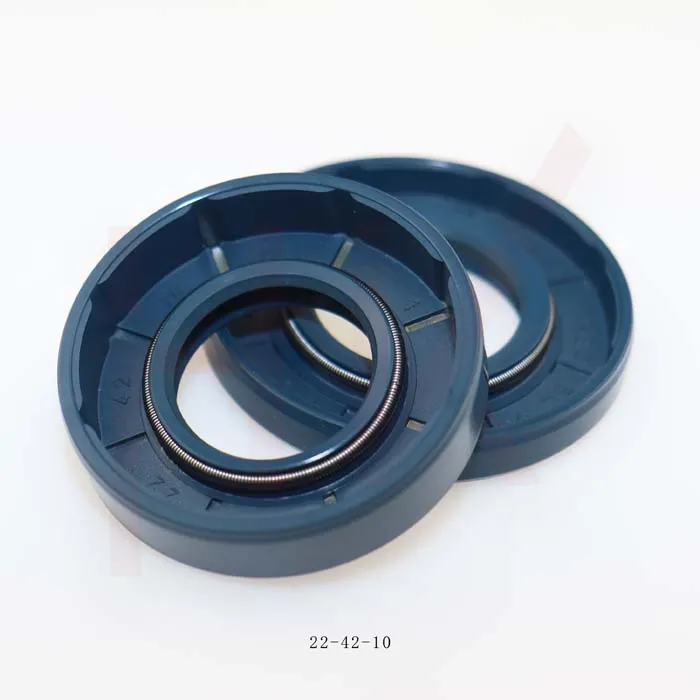Nov . 26, 2024 02:46 Back to list
20x35x7mm oil seal specifications and applications for various machinery and equipment
Understanding the 20x35x7 Oil Seal Specifications and Applications
In the realm of mechanical engineering, oil seals play a critical role in various applications. Among the many types of oil seals available, the 20x35x7 oil seal is particularly noteworthy. This article delves into the specifications, materials, functions, and applications of the 20x35x7 oil seal, providing a comprehensive overview for engineers, manufacturers, and enthusiasts alike.
Specifications
The designation 20x35x7 specifically refers to the dimensions of the oil seal. The first number, 20, indicates the inner diameter (ID) of the seal in millimeters, while the second number, 35, denotes the outer diameter (OD). The final figure, 7, represents the width (thickness) of the seal. Therefore, the 20x35x7 oil seal has an inner diameter of 20 mm, an outer diameter of 35 mm, and a thickness of 7 mm.
These seals are typically designed to fit various machinery and equipment where they act as barriers to prevent the leakage of lubricants, hydraulic fluids, and prevent the ingress of dust, dirt, and other contaminants. Their robust design ensures durability and efficient operation in critical applications where minimizing fluid loss is paramount.
Materials
The construction of oil seals is crucial to their performance. The most common materials used for the 20x35x7 oil seal include rubber compounds such as nitrile rubber (NBR), fluorocarbon (Viton), and silicone rubber.
- Nitrile Rubber (NBR) This material is the industry standard due to its excellent resistance to oils, fuels, and grease. It offers a good balance of mechanical properties and is highly durable against wear. - Fluorocarbon (Viton) Known for its superior resistance to high temperatures and aggressive chemicals, Viton seals are ideal for applications involving harsh fluids. However, they tend to be more expensive than NBR seals. - Silicone Rubber Silicone offers excellent temperature resistance but is generally less effective for oils compared to NBR. Silicone seals are often used in scenarios requiring flexibility and a specific temperature range.
Choosing the right material is vital for the performance of the 20x35x7 oil seal in particular applications
.Functions of Oil Seals
20x35x7 oil seal

Oil seals primarily function to retain lubricants within machinery while simultaneously preventing contaminants from entering sensitive components. Their importance cannot be overstated, as any failure in this capacity could lead to significant wear and tear, resulting in equipment malfunction or breakdown.
Furthermore, oil seals contribute to the overall efficiency of machines by minimizing lubricant loss, which is critical for maintaining proper lubrication regimes. This not only prolongs the life of the machinery but also reduces maintenance costs and downtime.
Applications
The 20x35x7 oil seal is widely used across various industries, showcasing its versatility. Common applications include
1. Automotive Oil seals are frequently utilized in engines, transmissions, and differentials to seal rotating shafts and ensure that oil remains contained within these critical components.
2. Industrial Machinery In manufacturing environments, oil seals help protect bearings and gears from dirt and moisture, which is especially important in heavy machinery operating under adverse conditions.
3. Agricultural Equipment The harsh conditions faced by farming machinery necessitate the use of reliable oil seals. The 20x35x7 oil seal can be found in tractors, harvesters, and other agricultural implements.
4. Aerospace In the aerospace sector, oil seals maintain lubricant integrity in various systems, including hydraulic and landing gear assemblies, ensuring operational safety and reliability.
Conclusion
The 20x35x7 oil seal is an essential component in many mechanical systems. Understanding its specifications, materials, functions, and various applications allows engineers and technicians to make informed decisions when selecting the right oil seal for their needs. With the right material and proper installation, these seals can significantly enhance equipment performance, longevity, and safety across numerous industries. As technology advances, the development of more effective and durable oil seals will continue to support the ever-evolving machinery and equipment requirements in our modern world.
-
TCN Oil Seal Metal Ring Reinforcement for Heavy Machinery
NewsJul.25,2025
-
Rotary Lip Seal Spring-Loaded Design for High-Speed Applications
NewsJul.25,2025
-
Hydraulic Cylinder Seals Polyurethane Material for High-Impact Jobs
NewsJul.25,2025
-
High Pressure Oil Seal Polyurethane Coating Wear Resistance
NewsJul.25,2025
-
Dust Proof Seal Double Lip Design for Construction Equipment
NewsJul.25,2025
-
Hub Seal Polyurethane Wear Resistance in Agricultural Vehicles
NewsJul.25,2025
-
The Trans-formative Journey of Wheel Hub Oil Seals
NewsJun.06,2025
Products categories
















